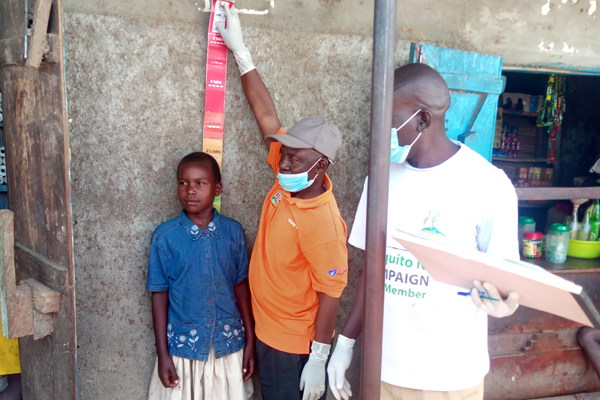Residents decry lack of latrines on Mbeya Island

The four-stance EcoSan toilet on Mbeya Island in Mukono District. PHOTO/DANIEL M SSENFUMA
What you need to know:
Open defecation has been rampant on the island found in Mpunge Sub-county, Mukono District, exposing residents to hygiene-related diseases such as cholera, typhoid and dysentery
Mbeya, a tiny island on Lake Victoria with an estimated population of 300 people, has received its first permanent pit-latrine.
Open defecation has been rampant on the island found in Mpunge Sub-county, Mukono District, exposing residents to hygiene-related diseases such as cholera, typhoid and dysentery.
Ms Joan Amron, a mother of five, who has lived on the island for 18 years, says: “We have been faced with a challenge of persistent diseases due to faecal contamination.”
Mr Elphaz Amanya, another resident, says they incur a lot of costs to treat the sick.
“We get treatment from Katosi Landing Site, but to reach there, one spends Shs10,000 by a passenger boat while a special hire boat charges Shs50,000,” he said.
Rev Peter Bakaluba Mukasa, the Mukono District chairperson, blames the issue on lack of funds, saying constructing pit-latrines at some landing sites is expensive due to the rocky or sometimes sandy terrain in the area.
“Looking at our budget, sometimes we find it hard to provide lavatory facilities at landing sites, and it is the reason why we welcome partners to help,” he said.
It is against this background that Katosi Women Development Trust (KWDT), a local community-based organisation, has constructed a four-stance EcoSan toilet and a three-stance bathroom on the island.
An EcoSan toilet works without water and separates urine from faeces. The waste can be recycled by turning it into compost or liquid fertiliser for crops.
Ms Margret Nakato, the coordinator of KWDT, says the organisation decided to construct the bathrooms after receiving complaints from women who told them that due to the lack of facilities, they bathe on the lake shores which is shameful.
KWDT also constructed a modern solar-powered water supplying system which pumps and purifies water from Lake Victoria.
The project is supported by German-based organisation Arche noVa and costs Shs178 million.
Ms Nakato says the solar-powered water supplying system is one of 13 similar projects being carried out in communities on the shores of Lake Victoria.
“We realised that the safe water supply system alone was not enough to change the lives of islanders and we had to add a four-stance EcoSan toilet, and a three-stance bathroom facility,” she says.
Ms Catherine Naula from Living Water, a firm contracted to develop the solar-powered water supplying system, says the water system has a lifespan of more than 25 years and pumps a capacity of three to 11 cubic litres of water per hour.
“The water has been tested and can be taken raw if collected with clean utensils,” she says.
“The system is automated and does not need operators. We started with four standpipes distributed in the community, but with room for increasing on the capacity in case the population increases,” Ms Naula adds.
Statistics from Mukono show that 40 percent of the population in the district lacks toilets.
Many island communities in the country have low access to clean toilets and water.
The few existing places of convenience at some islands on Lake Victoria are privately owned and costs Shs200 to use a pit-latrine per visit.
The Ministry of Health also revealed that the people to pit-latrine ratio at most landing sites is one latrine per landing site.




